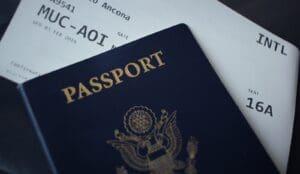The Titan submersible’s tragic and ill-fated exploration of the Titanic wreckage highlights the dangers of underwater tourism. Yet despite the risk, humans will continue to try and visit locations that are, at best, uninhabitable and, at worst, deadly. Here are 8 other underwater sites that are even more dangerous to visit.
8. SS Yongala Shipwreck
Australia
Resting on the ocean floor near the Great Barrier Reef, the SS Yongala shipwreck is a hauntingly beautiful yet hazardous dive site in shark-infested waters. The strong currents and unpredictable weather patterns surrounding the wreck make it a challenging spot for divers.
Further, protection efforts of the site itself require that ships anchor at a distance within a radius of 2,615 feet (797 meters).
7. Lake Titicaca
Bolivia & Peru
The discovery of the submerged ruins of an ancient temple predating the Incan Empire is only one of the alluring reasons to visit the highest navigable lake in the world. Resting at 12,507 feet (3,812 meters) above sea level, this freshwater lake in the Andes Mountains has a maximum depth of 932 feet (284 meters).
Dealing with the effects of extremely high altitudes makes diving here challenging and requires proper training.
6. The Dragon Hole
South China Sea
The Dragon Hole is the deepest known underwater sinkhole in the world. It is located in the South China Sea and has a depth of over 3,000 feet. The Dragon Hole is a popular diving spot, but also very dangerous.
The strong currents and low visibility make it a challenge for even experienced divers.
5. Devil’s Den
Williston, Florida
Nestled in Florida’s natural springs, Devil’s Den is a mesmerizing underwater cavern system renowned for its unique rock formations and crystal-clear waters. However, navigating the labyrinthine caves requires expertise in cave diving techniques.
Limited visibility, tight spaces, and potential disorientation make this subterranean wonderland a perilous adventure. However, the site is recognized for the animal and human remains (dated to about 7500 BC) and artifacts found underwater, including those from extinct (Pleistocene) species from 13,000 years ago.
4. Cenote Esqueleto, The Temple of Doom
Tulum, Mexico
Lying just beyond the famous Tulum Ruins in Mexico’s Yucatan peninsula and known by the ominous nickname “The Temple of Doom,” this network of underwater sinkholes known as “The Cenotes” is part of dark and intricate cave systems that present potential disorientation risks, limited visibility, and tight spaces.
The main reason behind the many deaths at this location is getting lost and running out of air.
3. Great Blue Hole
Lighthouse Reef, Belize
This alluring but treacherous “Great Blue Hole” is located off the coast of Belize and is a natural wonder that entices divers worldwide. This awe-inspiring sinkhole reaches a staggering depth of 407 feet (124 meters). Its captivating beauty masks its hazardous nature within its depths, such as strong currents and narrow passages that can be disorienting.
In 2018, two submarines explored its depths, completing a 3D map of the 1000-foot-wide hole, discovering a layer of hydrogen sulfide at 300 feet deep, and that the water below was anoxic and devoid of life. They also found two bodies.
2. Samaesan Hole
Samae San Islands, Thailand
Several factors make this a dangerous underwater location. The most dangerous characteristic is that the seabed is littered with unexploded bombs, as this was a former dumping ground for military explosives. However, the depth is also dangerous, measuring 280 feet (85 meters).
Complicating matters further are the powerful currents that sweep divers miles away from the hole.
1. Blue Hole
Dahab, Red Sea
This submarine sinkhole is located in southeast Sinai, north of Dahab, Egypt, on the coast of the Red Sea. It is universally recognized as “The World’s Most Dangerous Dive Site.”
This spot has earned the “Divers Cemetery” foreboding nickname due to the high number of fatalities at the 463-foot (130-meter) sinkhole.
It is said that over 150 divers have lost their life in Dahab’s Blue Hole. However, recent estimates put the number between 130-200 fatalities. The reasons are not clearly understood. Nearby, commemorative plates are embedded in a mountain front inscribed with the dead’s names.
Egypt now stations a police officer at the site to ensure that divers only dive with a certified guide to ensure safety procedures are followed.









